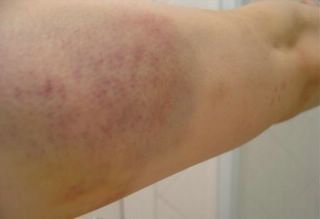忍耐 + 掌握人生
Psychology of Play
I have found 'that' feeling again. Great feeling! It was during a jigeiko on Wednesday night Willoughby training that I suddenly realised that I haven't been using my left foot to support my kamae correctly over the past 2 months. I have neglected the importance of the left foot and have placed too much weight on my right foot. As a result, I haven't been able to launch my seme-men cut in one smooth quick motion. That, however, is going to change. I have improved my kamae. Just in time before I go off to Japan.
UNSW
Last night I went to train at UNSW. When I saw how many people were in the dojo, I was shocked. Inside, there were only FOUR people - Gideon, Mike, Dino and Cecilijia. They looked esctatic when they saw me. "YAY! Vivian", someone called out. haha, I felt so welcomed. It was such an intimately small class.
Most of the UNSW regulars went up to Brisbane to compete in the UniGames and that explained the small class size last night. Kenji, the Japanese visitor, also came about the same time as me. So 6 of us were training last night, and Sano Sensei came half way through the haya-suburi to instruct the class.
The 6 of us has decided to do 2 rounds of 70 haya-suburi. Mike set a super fast pace in both rounds. Luckily I have been doing some haya-suburi homework, and so surprisingly, the 140 haya-suburi was quite a pleasant workout.
Back To Basic
After we got into full bogu, we did 3 rounds of kirikaeshi and then 2 rounds each of kihon-men, kihon-kote, and kihon-doh. It was so good to put the focus back on to the absolute basics. This gave me the chance to self-examine the use of the left foot in kamae and during push-off in kihon-men.
Sano Sensei introduced the special waza routine for last night - kihon-men, kihon-kote, kihon-doh, kihon-men - which was the basis for all the exercises that followed.
Intensity and Connection
During these kihon exercises, Sano Sensei put special emphasis on the intensity and connection with our opponent, especially between cuts.
Once our energy and intensity were running high, Sano Sensei added a more active role for the receiving side. While one side still practiced the kihon routine, the receiving side will need to counter-attack those kihon cuts with men-debana-kote, kote-suriage-men, doh-uchiotoshi-men, men-kaeshi-doh.
It was difficult to grasp the correct timing and distance at the very beginning, but Sano Sensei encouraged us to keep trying and slowly I could feel a bit more success in those counter attack waza. It was at this time that Sano Sensei asked both sides to execute each cut as if we were in jigeiko or shiai. The aim was to make those cuts as realistic as possible, so to make the practice more worthwhile.
Entice Your Opponent
For the counter-attacks to work, Sano Sensei pointed out that it is important to entice your opponent into committing a cut that you have planned to counter-attack.
Jigeiko With Sano Sensei
We had free jigeiko in the last minutes. Sano Sensei told us to jigeiko with everyone in the dojo, so each jigeiko should limit to around 2 minutes each.
I had my last jigeiko with Sano Sensei. It's been a very long time since I had my last jigeiko with Sano Sensei (the last time was probably in Brisbane in July at the National Squad Training), so I was very keen to show my best kendo to Sensei.
It was a very good jigeiko as I could feel the intensity in the match. Sano Sensei told me that my cuts were much sharper after the training, which was very encouraging to hear.
Hiki-Doh
During the jigeiko, I had tried to execute a type of hiki-doh waza which I learnt from the July 2005 issue of Kendo Nippon. It didn't quite work the first time. So during the next tsubazerai encounter, I tried to execute the same hiki-doh to see if there were any improvements. Gosh, not only did Sano Sensei blocked it easily, he was able to chase me down and followed up with 2 men cuts while I was moving back. And THAT was how I lost my point during Founders Cup. My hiki-doh and zanshin were very weak.
So after the class, I asked Sano Sensei for advice on hiki-doh. He told me that he was taking note when I did my first hiki-doh during the jigeiko. He was thinking whether I would do it again. And so I did. So the second time, Sano Sensei didn't hold back and came chasing after me. So I asked Sano Sensei how I could make my hiki-doh more effective, and Sano Sensei gave me some really good advices. He said that maybe I should not cut doh as my first hiki waza. It might be a better idea strategically to execute powerful hiki-men first. Once the opponent became protective about their men in tsubazerai, the doh would become a easier target and then I could score a hiki-doh more effectively. Also, after hiki-doh, I should make a distance away from my opponent as quickly as possible to prevent him from chasing me down.
This lesson reminded me that Kendo is a psychological game.
Dino Zafirakos = Luciano Pavoratti?
Oh, almost forgot to mention about my jigeiko with Dino. Gosh, I thought both my eardrums have broken when Dino made his Pavoratti-styled kiai during tsubazerai. Now, that's the most fearsome tsubazerai waza. Gosh, scary stuff!


 Name: Vivian Yung
Name: Vivian Yung